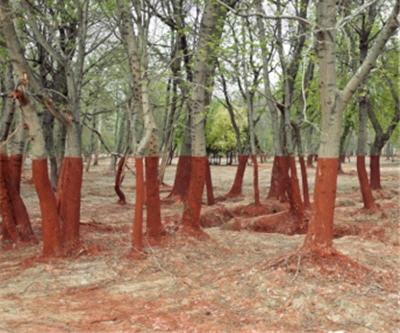
Spanish photographer Palindromo Meszaros has released a series of haunting photos on
American Photo depicting the devastating impact of a toxic aluminium spill in 2010 upon forests and rural communities in Western Hungary.
The tranquil pastoral images would be undistinguished from run-of-the-mill nature photos were it not for one thing –eerie bands of crimson and pink colour which encompass everything in the shots beneath human head height. In some of the photos the strata of colour ceases with almost photo-shopped precision at the presumed level of the spill, creating a surreal effect.
These unsettling scenes are the aftermath of a catastrophic accident at the Ajkai Timföldgyár aluminum plant two years ago, when one million cubic metres of waste from red mud lakes spilt from holding reservoirs, unleashing a two meter high wave of caustic sludge which devastated 40 square kilometres of the surrounding area and left nine people dead.
The caustic mud is a waste product of the Bayer process, which refines bauxite into alumina, and primarily contains non-aluminum compounds present in the bauxite ore. Although subsequent scientific analyses of the sludge indicated that it did not contain heavy metal levels considered dangerous for the environment, its high pH caused severe chemical burns to both humans and animals, decimating river ecosystems and contaminating the soil.
The spill destroyed the local Marcel river ecosystem, and affected neighbouring countries in both the Balkans and Eastern Europe after reaching the Danube river in October of 2010.
The precise cause of the catastrophe remains unclear, with Hungarian Prime Minister Viktor Orbán subsequently claiming that it was presumably the result of “human error.”
Image from American Photo. Hat tip, Grist
Comments
Smithgf398
Orbite Aluminae (ORT) has a new process which not only neutralises the Red Mud, it extract the useable elements within it.